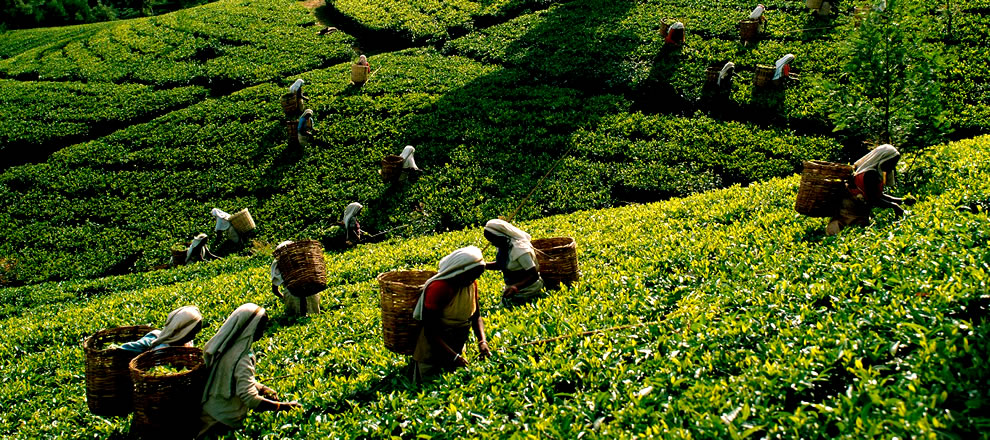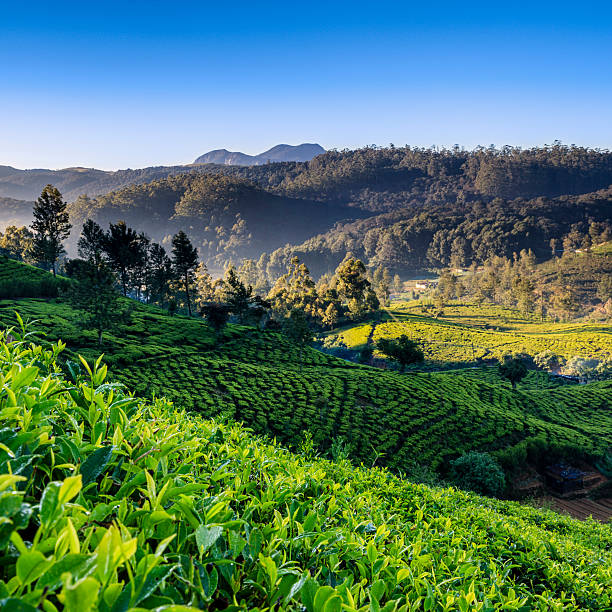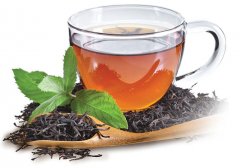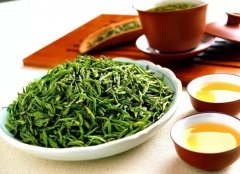What are the best varieties of black tea? where does Ceylon black tea, the world's top black tea brand, come from?
Tea is the cornerstone of Sri Lanka, its people and culture. Tea is not only the heart of the Sri Lankan people, but also has become one of the most important pillars of the Sri Lankan economy. In 1824, the Peradeniya Botanical Garden in Kanti planted the first non-commercial tea trees of these two varieties, camelia sinensis and assamica. Commercial cultivation in Sri Lanka began in 1867, when it was called Ceylon, and the tea grown in Sri Lanka is still famous for the name Ceylon. The British began to grow tea in an organized way after the establishment of the first tea garden at Loolecondera Manor. In Sri Lanka, tea is mainly grown in the central mountains and lower areas in the south. These tea growing areas are clearly divided into different areas, each of which is famous for producing unique tea. Different regions, different topography, different soil composition, different rainfall patterns and different climatic conditions create a unique quality of leaves and cups! Let's take a look at the different tea-growing areas in Sri Lanka.
Kangdi
Historically, Kanti marks the beginning of Ceylon tea industry. Kanti is in the middle of the plateau. However, although the capital is located in a relatively low-lying valley, the property itself is located on the surrounding mountains. Ceylon tea from the Kanti region is often described as "medium growth" and is grown between 650m and 1300 m (2000-4000 ft) above sea level. Most of the estates in the Candy area are located on the western slopes of the nearby hills, so their tastes are largely affected by the "Western quality season", which means that the best Ceylon tea is produced in the first quarter of each year. when the cool, dry weather begins throughout the region. The range of taste and shape depends on altitude and whether the plantation is protected by the monsoon, but the taste of most plantations is very bold. Kanti tea is mainly a strong and full-bodied wine. They are the favorite of many tea connoisseurs!

Timbra
Timbra is one of the first areas to be planted after tea replaced coffee in the 1970s, and it is one of the most famous names of Ceylon tea. Timbra is famous for some of the best Ceylon teas and sits on a picturesque plateau. The name of the area comes from the valley in the center of the area. Dinbura was also one of the first areas to try to grow tea. Even today, most people in Timbra are plantation workers. The plantations are located between 3500 and 5500 feet (1100 to 1700 meters) above sea level and cover the western slope of the area. The best Ceylon tea in Timbra is produced in the first quarter of each year, when the whole area is cool and dry. The range of taste and shape depends on altitude and whether the plantation is protected by the monsoon, but the taste of most plantations is very bold.
Nuvala Elia
Nuvalaelia, also known as Little England, is arguably the most beautiful region in Sri Lanka. Because Nuwara Eliya is unique, so its tea is also unique, cypress aroma, wild mint and eucalyptus menthol floating in the air, forming a unique taste of tea. As far as tea connoisseurs know, Nuwara Eliya, located 6250 feet (1900 meters) above sea level, is the home of Ceylon tea, just as champagne is to French wine. It is light brewed and is a very smooth cup of tea. It can also be refreshed with ice. These Ceylon teas have exquisite floral aromas and a light, light taste. Popular varieties include whole-leaf orange white oil (OP) and broken orange white hair (BOP).
Wuwa
Uva is located in the eastern part of the hilly area, where the weather alternates between heavy rain and high temperatures all the year round. Strong winds disrupt the normal photosynthesis of plants, and the contrast between cold nights and warm days leads to chemical changes in tea plants. These two factors together endow tea wine with unique characteristics of "deer foot grass". These teas usually grow at elevations of 900m and 1500 m (3000-5000 ft).

Luhanna
Luhanna grows slowly, the climate is hot and humid, there is plenty of rain all year round, and shrubs confidently produce new leaf buds regularly. Most of the tea grown on the low slopes here is processed into orange white tea (OP) and flower orange white tea (FOP). Their beautiful leaves are silky and twisted neatly, and their jet-black leaves are often mixed with silver or golden buds. They produce a full-bodied red wine that is full-bodied, full-bodied, juicy and with a hint of honey and chocolate.
Sri Lanka has many different regions, different climatic conditions and different soils, where tea can be grown with unique and diverse flavors, which is synonymous with each region. From the tea garden to the production process, the care of tea leaves makes Ceylon tea maintain the best quality in the world. Basilur pays tribute to this wonderful feature of Sri Lankan tea through its Ceylon leaf collection, where we have planned the best tea collection from every tea growing area in Sri Lanka!
Important Notice :
前街咖啡 FrontStreet Coffee has moved to new addredd:
FrontStreet Coffee Address: 315,Donghua East Road,GuangZhou
Tel:020 38364473
- Prev

The efficacy and function of black tea is suitable for what season to drink black tea, where is good, and how to drink black tea best.
These four kinds of teas (white tea, oolong tea, green tea and black tea) are all made from tea trees, but they have different tastes. This is because they are treated in different ways to achieve different degrees of oxidation. Black tea has a higher degree of oxidation than the other three teas, so its taste can be maintained for several years, while green tea may lose its flavor within a year or several years. Ceylon (Sri Lanka) with strong fragrance
- Next

There are several kinds of tea classification in China. Introduction to the famous tea species based on the basic knowledge of six tea families.
The history of Chinese tea is a long and gradual process of extraction. Generations of growers and producers have perfected China's way of making tea, as well as its many unique regional differences. The original idea was attributed to the legendary emperor Shennong, who is said to have lived 5000 years ago. His visionary decree requires, among other things, that all drinking water must be boiled for sanitation
Related
- Being chased out of the rain in front of Starbucks?! Store: Sheltering from rain under umbrellas poses a safety hazard
- The white moonlight has changed?! Lucky launches "Big Winter Pear American"
- Hand-brewed coffee three-stage method, high-sweet and universal brewing method to share! What does the high sweet water level of hand-brewed coffee mean?
- What is the difference between raw, refined and full espresso coffee? How to extract espresso and taste good?
- A complete list of coffee bean names and their meanings! What is Yejia Shefi coffee? Where is Mantelin coffee?
- What grade does Arida Manor Kaduai coffee beans belong to? What treatment is Arida ASD slow anaerobic sun exposure?
- The milk tea cup becomes smaller?! Overlord Tea Girl launches a new "Return to Yunnan" series
- Accused of selling counterfeit and high-priced coffee beans! Well-known boutique coffee brand "Oukelao" bowed and apologized!
- How to make espresso dumplings? Can I eat coffee and glutinous rice balls together?
- Save the unformed and stagnant powder cakes in one second! What is the problem with stagnant water in the powder bowl of the espresso machine?

